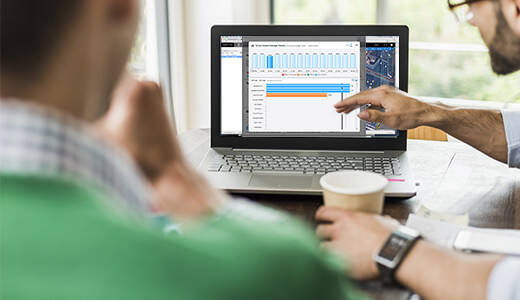In order to measure efficient fuel use, fleets need to implement a consistent process by:
-
Choosing a measurement
-
Implementing this measurement across the entire fleet.
-
Communicating results and performance, setting improvement targets and choosing a strategy for meeting them.
Q: How can fleet operators measure and monitor fuel consumption reliably?
A: Having settled on a particular method for measuring fuel use, fleet operators must then ensure that this is used to track fuel consumption across the whole fleet. There are a number of ways in which to do this, but two in particular are most relevant here: firstly, gathering fuel card and odometer information – this can be done manually, although some fuel card providers will provide a complete analysis of this – or secondly, via telematics systems which pull and aggregate fuel usage data. This thereby provides a clear and simple overview of how fuel is used, allowing managers to identify inefficiencies and devise measures to address them. While litres per 100km is the most common, different ways of calculating it will produce different results. The key is therefore to implement any such measurement consistently.
.jpg)
Q: What are the main factors that can affect fuel consumption?
A: The most important factor which can have an adverse impact on fuel consumption is aggressive use of the vehicle and poor driving habits by drivers. Other factors include inadequate servicing, frequent or extended use of air conditioning, roof racks, under-inflated tyres, being caught in traffic (with the engine idling), and humidity. While aggressive conduct behind the wheel – including rough cornering, harsh braking, excessive speeding and tailgating – is likely to burn more fuel, all factors can make a difference when managed properly.
Q: In which other areas can technology help fleets cut down on fuel usage?
A: Fleet tracking systems can help to deliver real improvements in fuel efficiency in a number of different areas. In particular, they allow fleet managers to keep track of where assets are at any given time – this allows them to redeploy vehicles where necessary, through real-time rerouting. This in turn helps to cut down on engine idling (for example, by preventing vehicles from being caught up in traffic jams unnecessarily) and thereby fuel usage. This technology also greatly simplifies the process of vehicle maintenance, which has a major bearing on fuel efficiency, including by providing automated maintenance alerts based on odometer readings. This helps to ensure that important service and maintenance tasks are carried out. In addition, electronic pre-trip inspections enable fleet managers to determine issues with vehicles before they become full-blown safety concerns; this could also be used to monitor issues which may impact fuel efficiency, such as tyre pressure. Telematics can also be used to identify short-comings in driver behaviour such as those already mentioned, so that fleet managers can then create individually-tailored driver training programs to tackle them.
Q: How can fleets make drivers more aware of the need for fuel efficiency?
A: The crucial factor in ensuring that drivers are aware of the importance of fuel efficiency is consistent and clear communication across the whole team. Drivers should be kept informed about both their personal performance and that of the wider team; both individual and collective targets could then be set, with rewards offered to incentivise improvement. Telematics data can be a particularly effective coaching tools between drivers and managers, providing detailed insights with regard to areas where drivers can improve. There should also be a collective effort to educate staff, including drivers, about the financial and environmental benefits of improved fuel efficiency.

Q: What are the main tips fleets should give to their drivers to help them use fuel more efficiently?
A: Fleets should emphasise, first and foremost, that calm and smooth driving makes a positive difference not only to driver safety but also to fuel consumption as well. Drivers need to be able to avoid harsh braking and acceleration, so the ability to anticipate effectively is especially important. Likewise, drivers should also be taught to avoid excessive speed, shift to higher gears earlier and to accelerate more gently.

